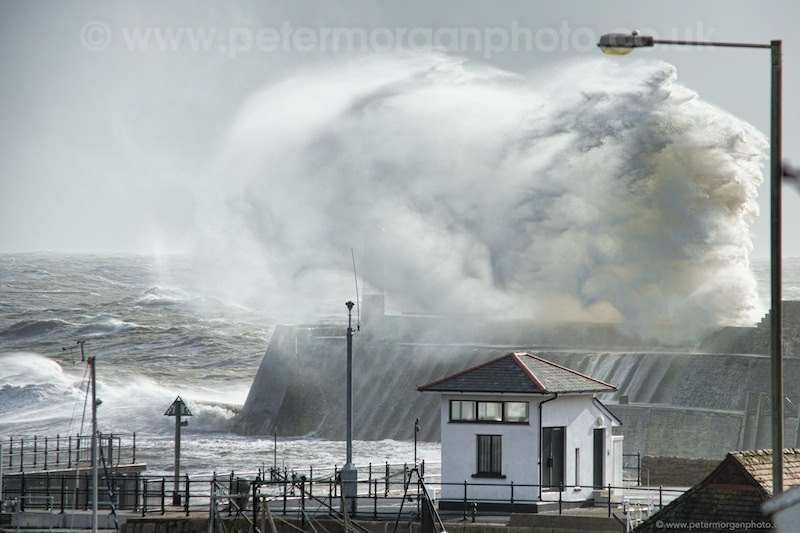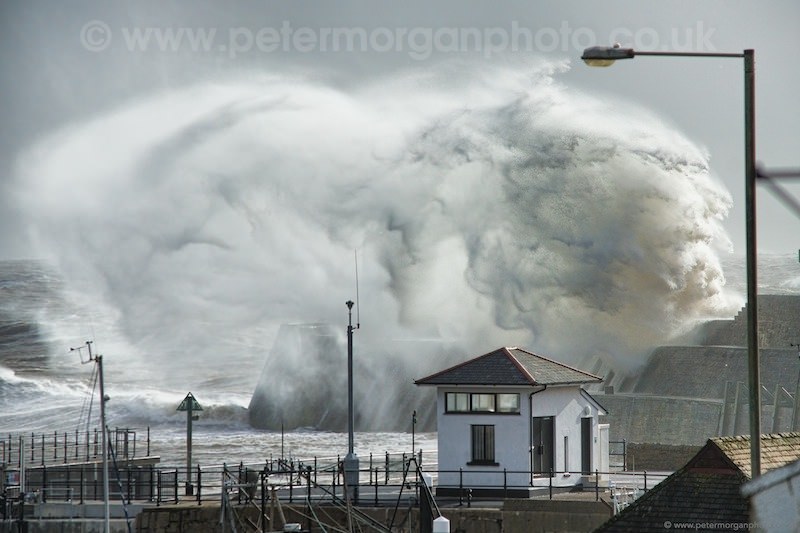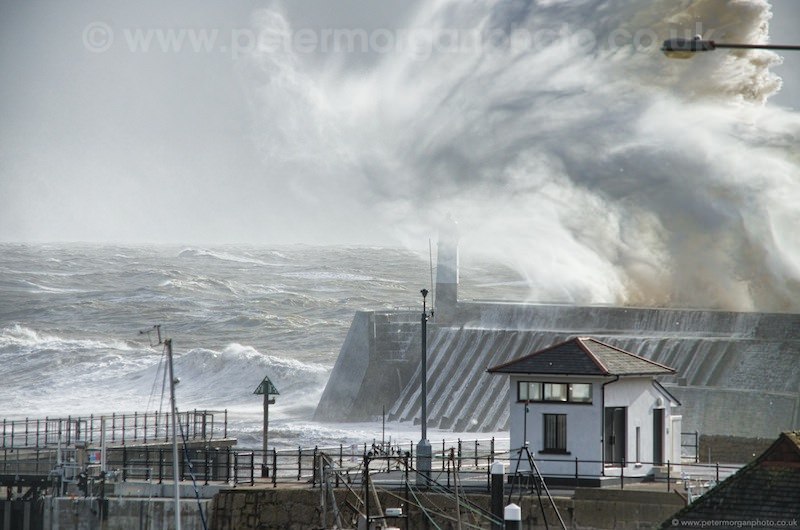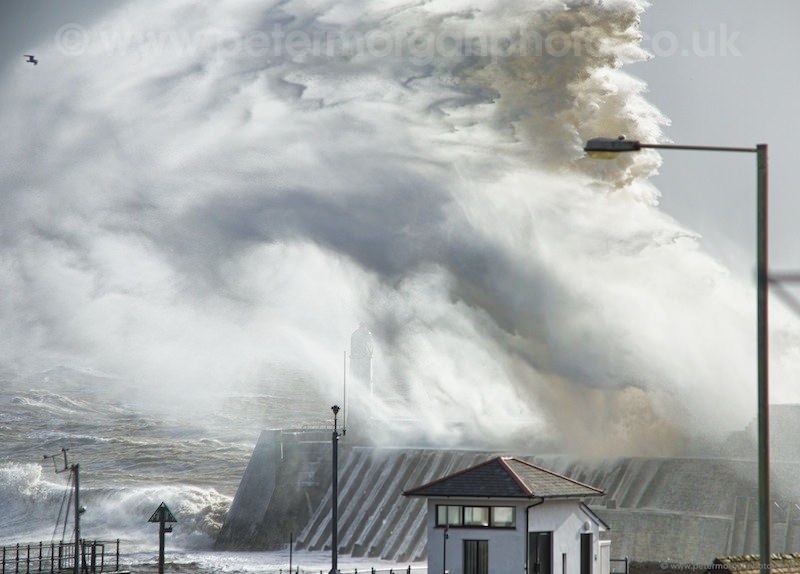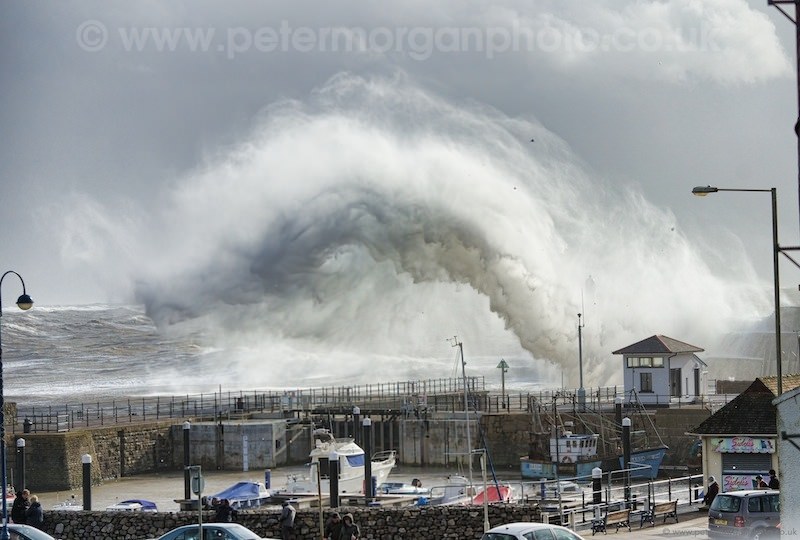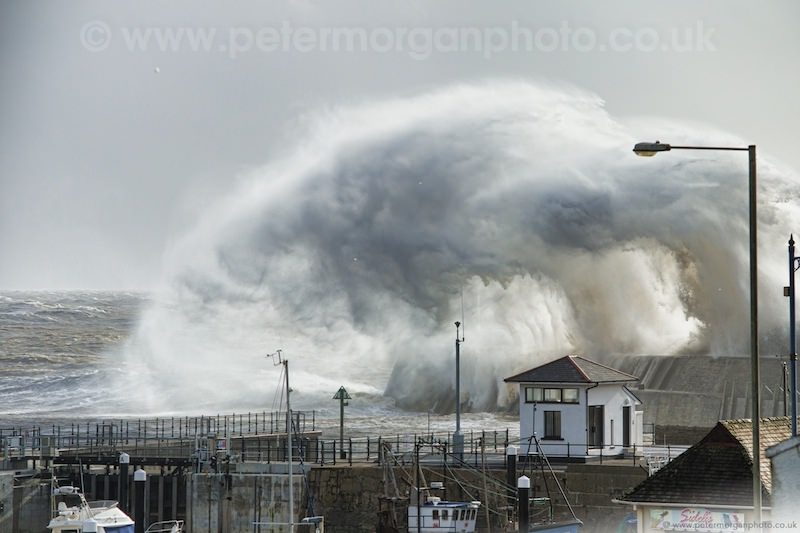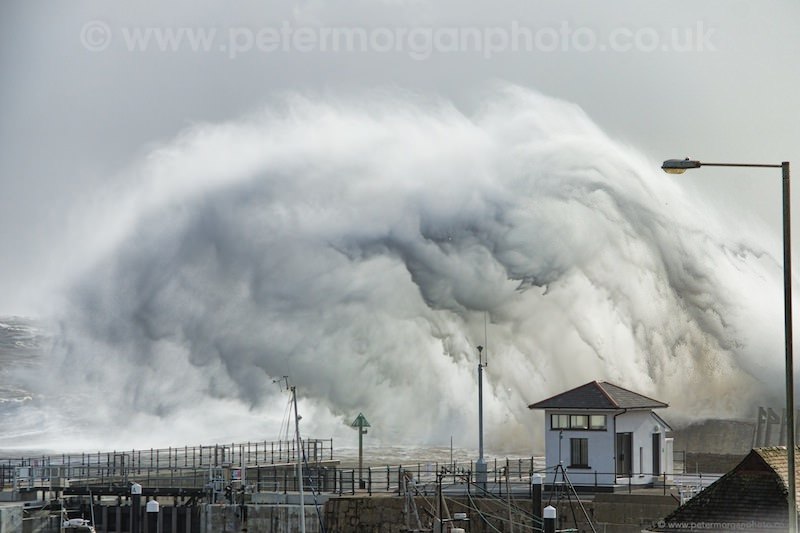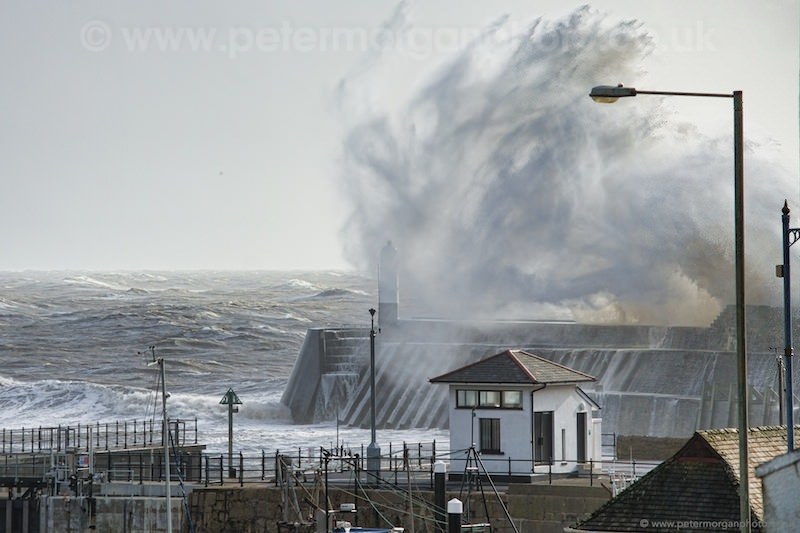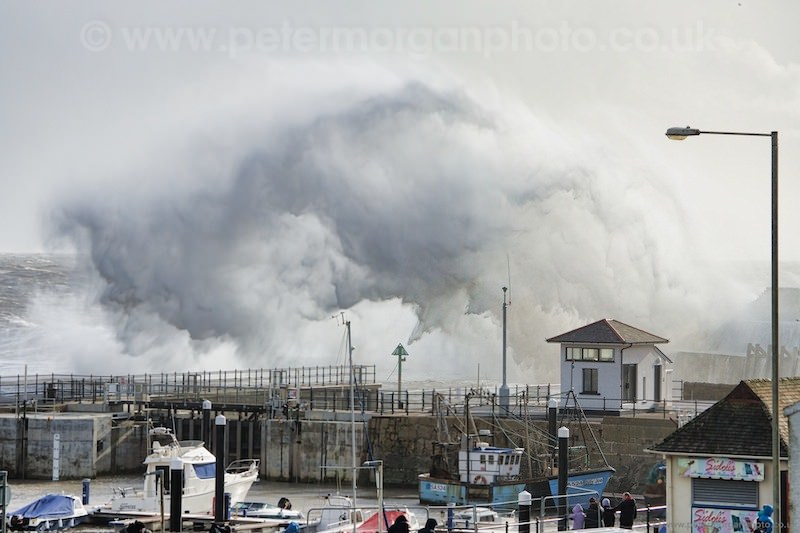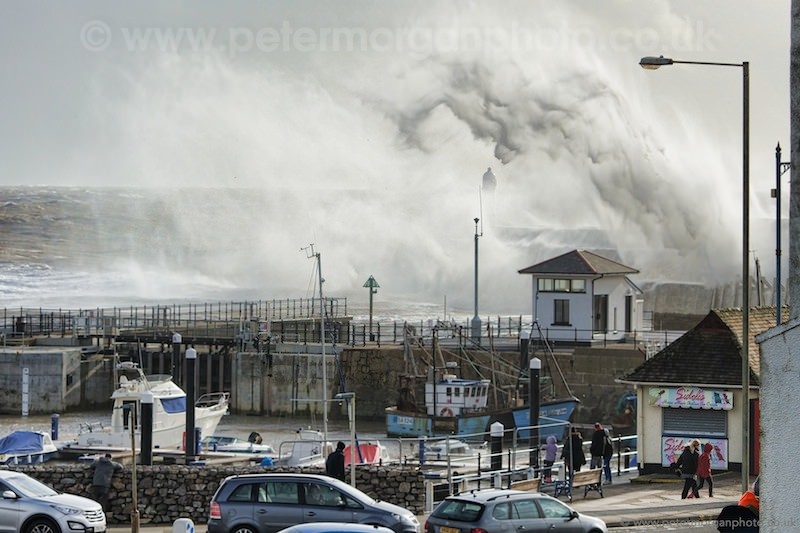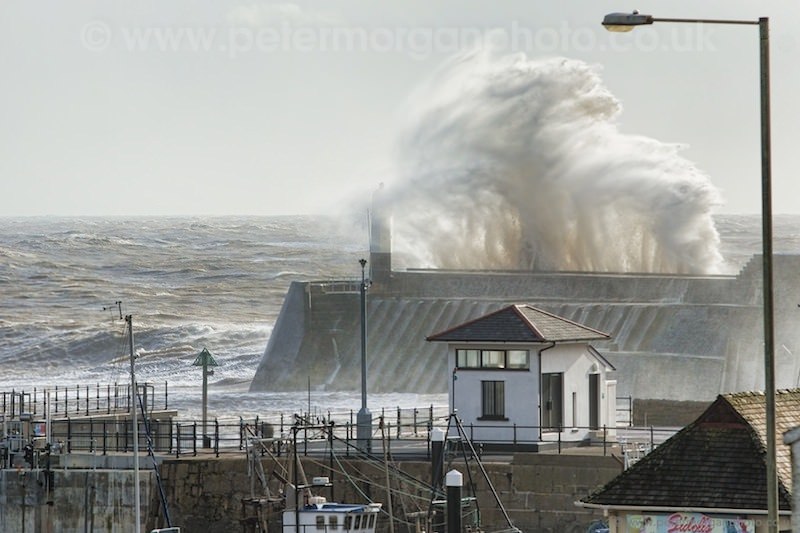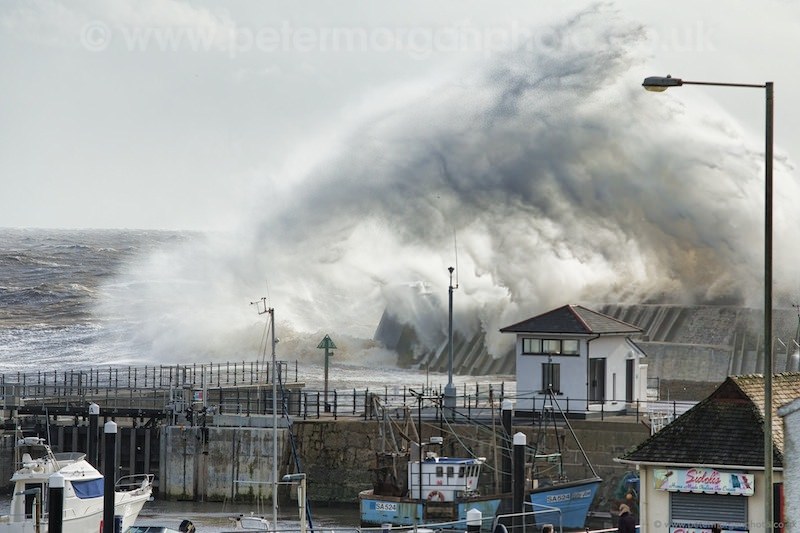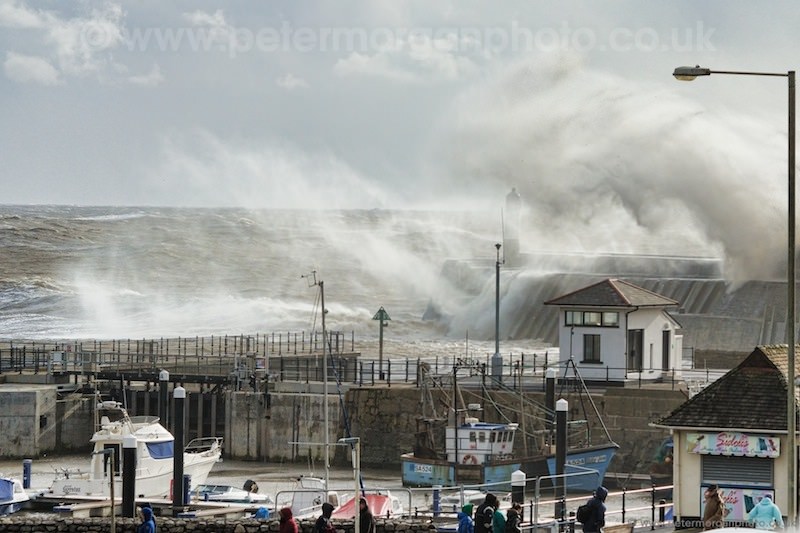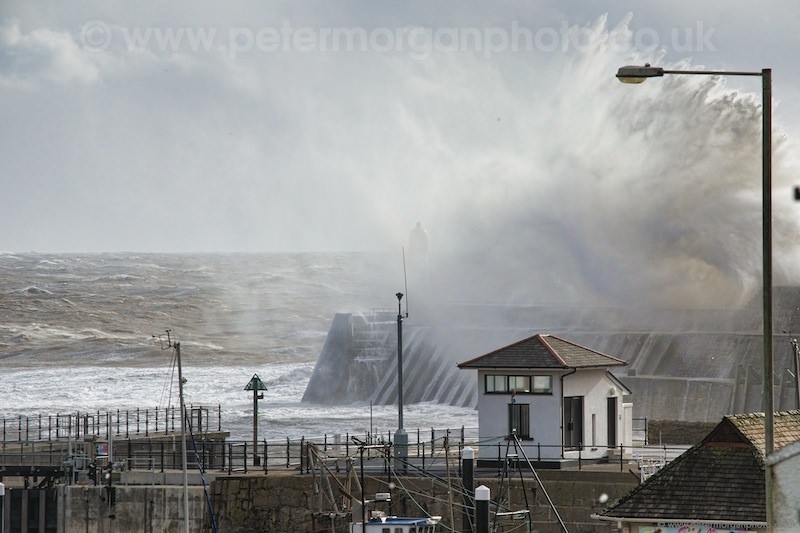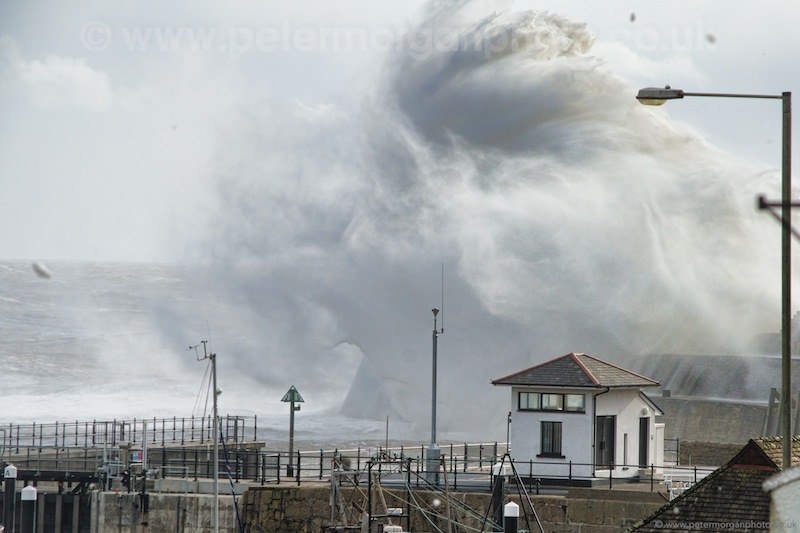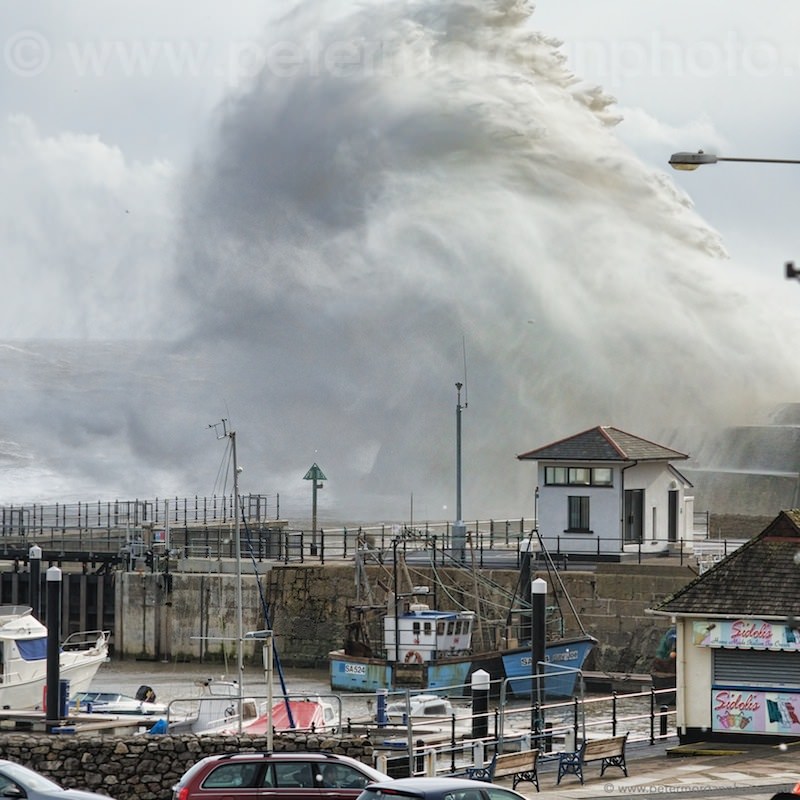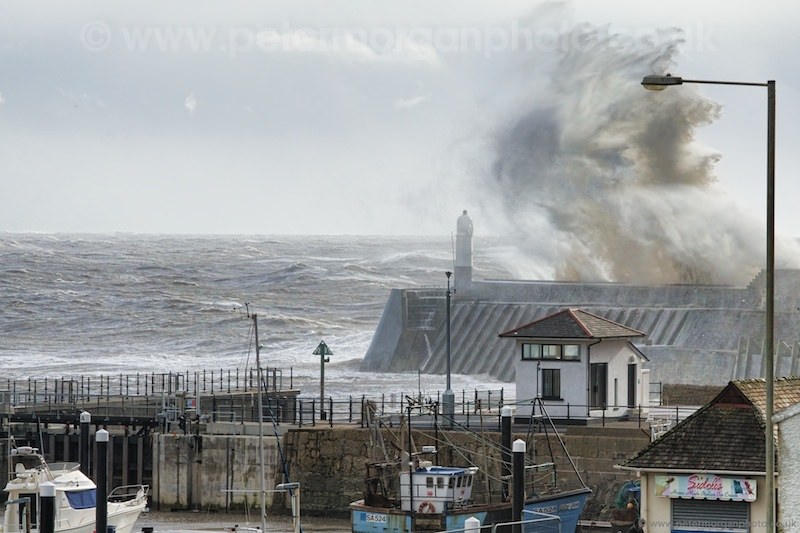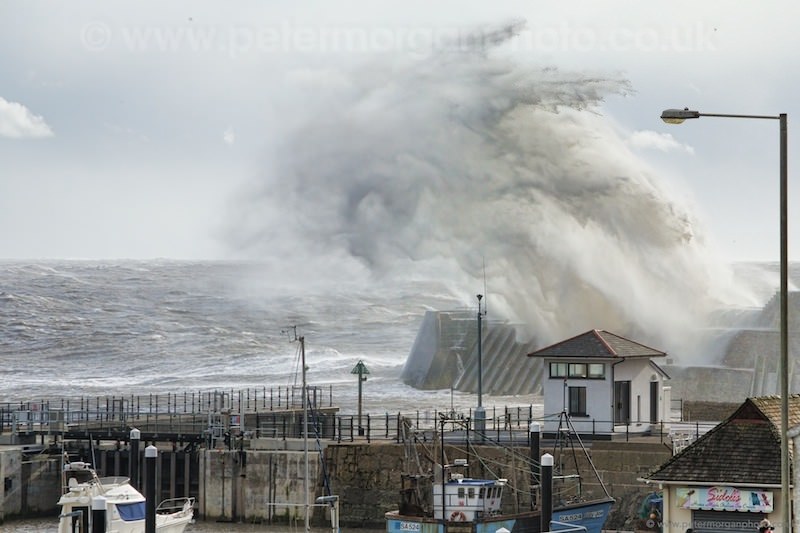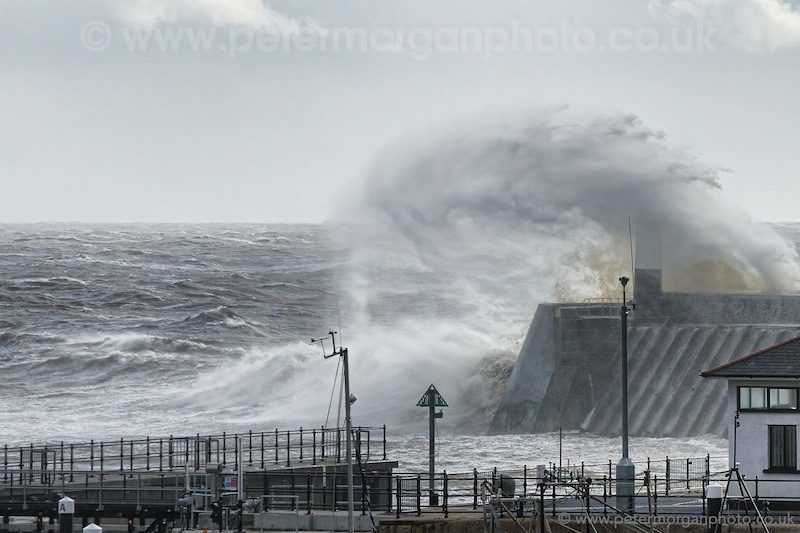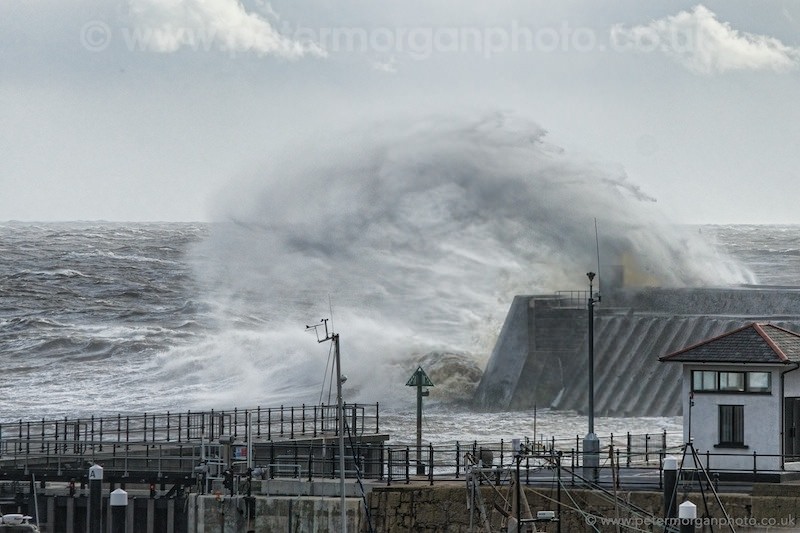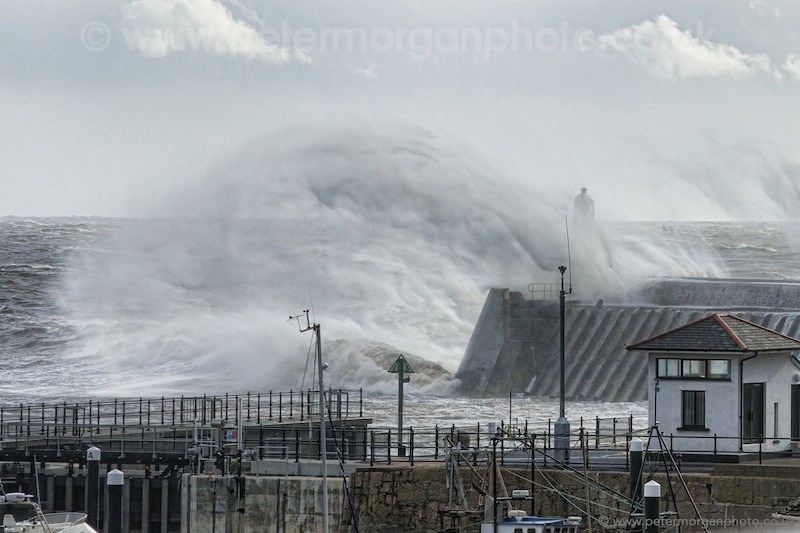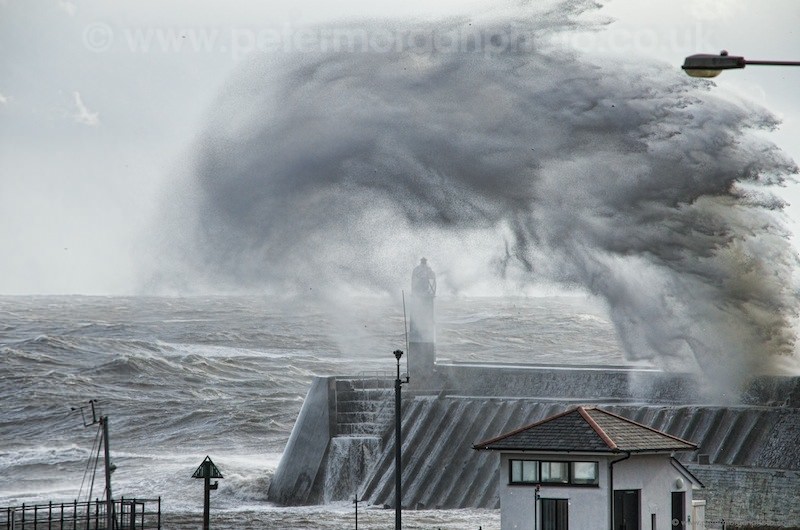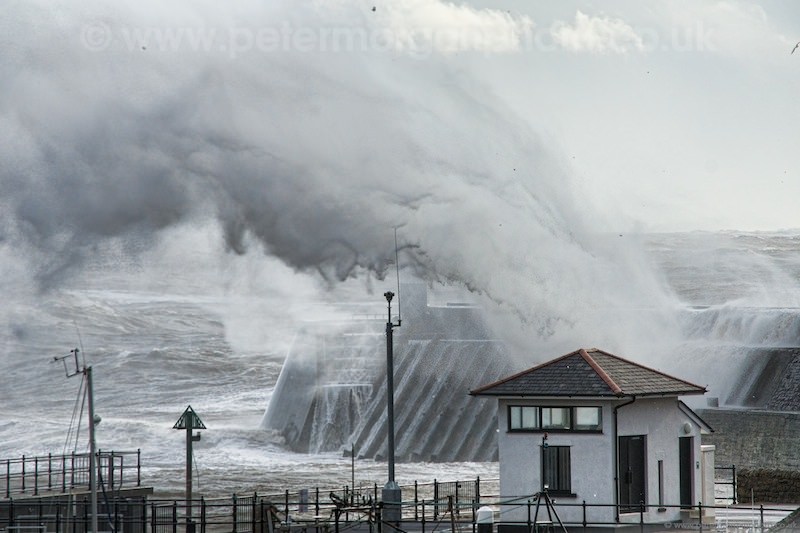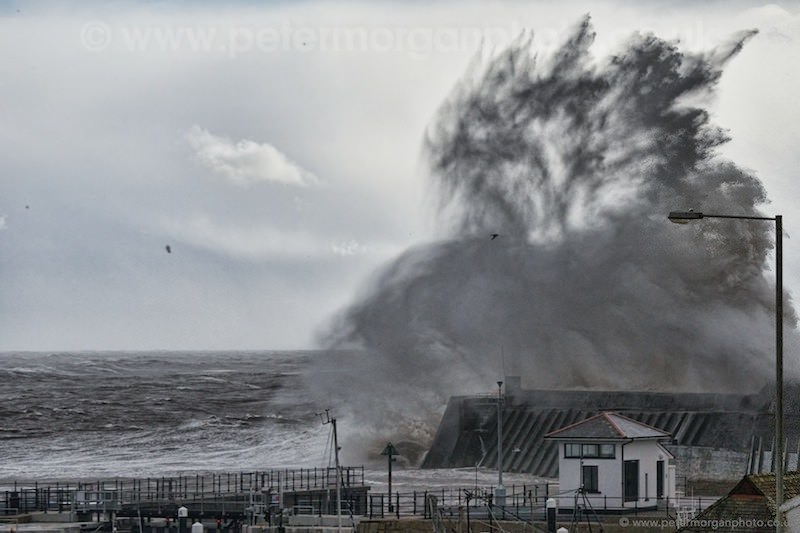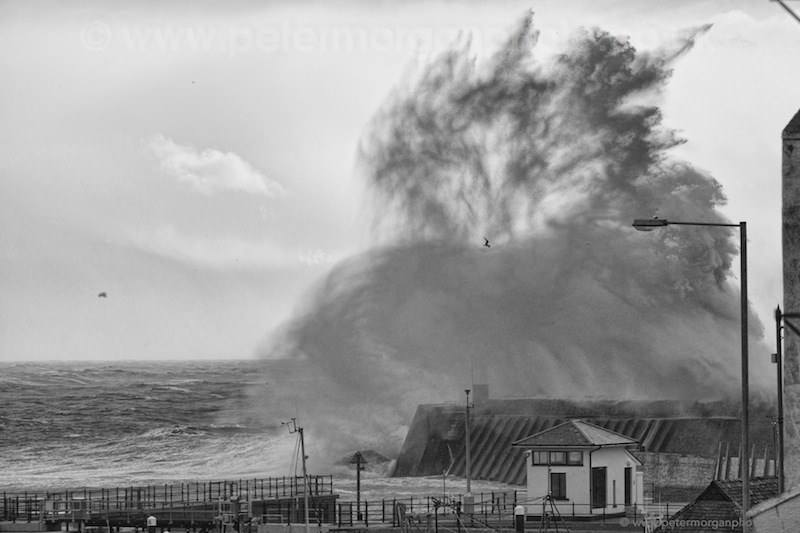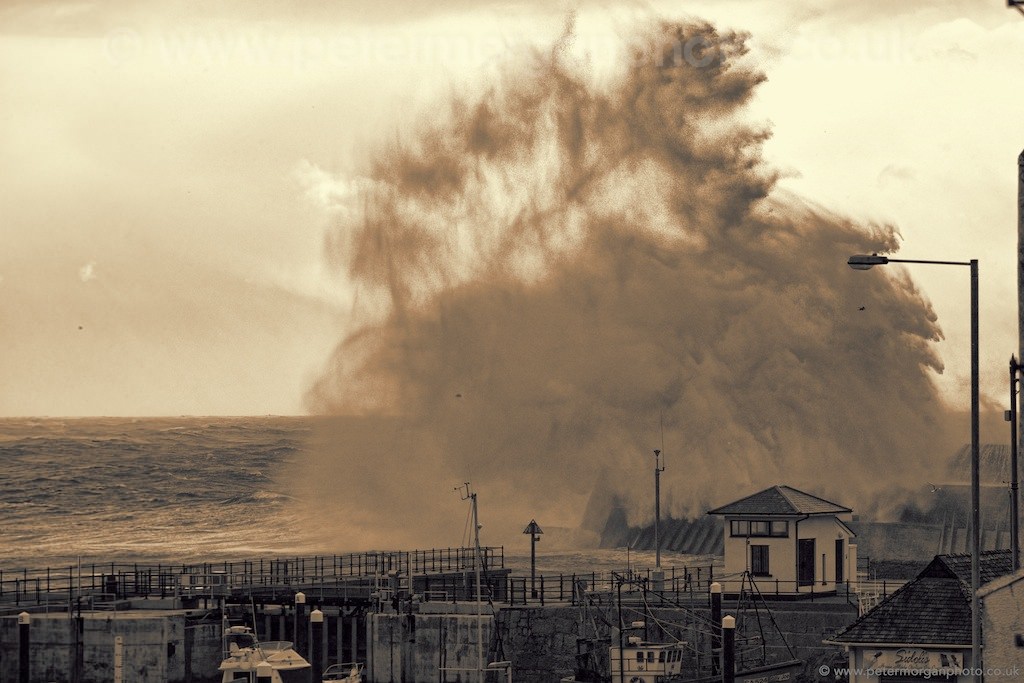There’s a man in a hi-vis jacket the colour of lemon-rind with mother-of-pearl strips on the sleeves and he’s flapping his arms and shouting at the people gathered beside the sea-wall. They can’t hear him. The roaring wind and the waves pounding the breakwater are the only things anybody can hear. We are all transfixed, hypnotised almost by the spectacle of the storm. Water is cascading down the sides of the lighthouse at the end of the pier and the solid earth sways as our senses adjust to the bewildering onslaught. Get back. Another wave explodes over the breakwater, like a giant lion of salt leaping a negligible fence. Cameras flash and phones flicker. Get back! Hi-vis man has broken in among the crowd now to tell them their lives are in danger. But it’s not even high tide yet, they mutter. He works for the council. The crowd sets its collective will against him, a flock of sheep facing a small dog. But like a good shepherd now, in his golden coat, he is invoking the law. Your lives are in danger. And another wave, the biggest yet, hurls an array of rocks against the reinforced concrete, scattering fragments of bright colour and broken crystal as the first big drops of rain begin to fall.
Are we in danger? The man in yellow is certainly convinced. I cast a sceptical eye at the waves. Not so big as they have been in recent storms, it seems to me. And I’ve become a regular here, at the end of the world, as each new front has swung in, launched from the jet stream’s catapult. I’ve made new friends too, a diverse band of pilgrims, like me, unable to pray, but drawn to the cathedral of the storm. Dramatic photographs of our little harbour have appeared in the national newspapers. Yes, we have seen worse. And yet, high tide approaches and dark clouds, wine-dark clouds, clouds black as malbec are dragging the horizon steadily closer. The Met Office is promising that this will be the biggest storm yet. So are we in danger? I shrug and wander away for a coffee. Perhaps some things are better seen from a distance.
It’s been the wettest winter on record. Barely a day has passed without rolling media coverage of the latest affluent street submerged in river mud and sewage, or of seafronts smashed and communities evacuated. Climate change? There has been extreme weather in the past of course but has it occurred this frequently? As chief scientist at The Met Office Julia Sligo says, “all the evidence suggests that climate change has a roll to play in it.” Politicians rush to find their wellies and wave their arms over the waters, like wizards making promises they know they can’t keep. “Money is no object,” says the Prime Minister. Meanwhile, Owen Paterson, the Environment Secretary, has slashed his department’s budget for adaptation to climate change by 40%.
A few days later I’m standing in the garden in Kenfig staring up at the roof of the house. Yet another storm has swept in and the roof looks tempted to lift off like a bin lid in the latest deranging gales. And what gales they are – slashing across Kenfig Pool like huge axes to strike the side of the house again and again and again. Wind speeds of over 90mph have been recorded on the other side of Swansea Bay in Mumbles and they must be reaching that speed here. I watch slate after slate flash away into the night sky towards Mawdlam, the next village. Parts of the ancient fascia creak and tear and break off and are flung into the field like spears. A corrugated iron sheet lifts from a neighbours shed roof and drunkenly floats like a torn sail, an oddly elegant moment, as if the storm is suddenly sorry, cradling its victim, but then it flips the sheet and smashes it hard into the ground on the driveway. There is no doubt that tonight the storm is truly dangerous. I hurry inside and sit close to the fire and stare into the flames for a long time, listening closely to the furious wind, and wondering if the roof will hold.
First published February 25, 2014
Kenfig Journal by Kristian Evans
Kristian Evans is an artist and writer from Bridgend interested in ecology and the ways we think about and interact with the “other-than-human” world. He has lived in Kenfig for five years. His performance installation “The Mirror’s Grain,” written with Tracy Evans, was launched at the Kenfig National Nature Reserve Centre in May 2010, as part of the “Mouth to Mouth” series of events organised by Arts for the Earth. The Kenfig Journal will appear here regularly.
@kenfigdunes on twitter
Images of storm at Porthcawl harbour © Peter Morgan


